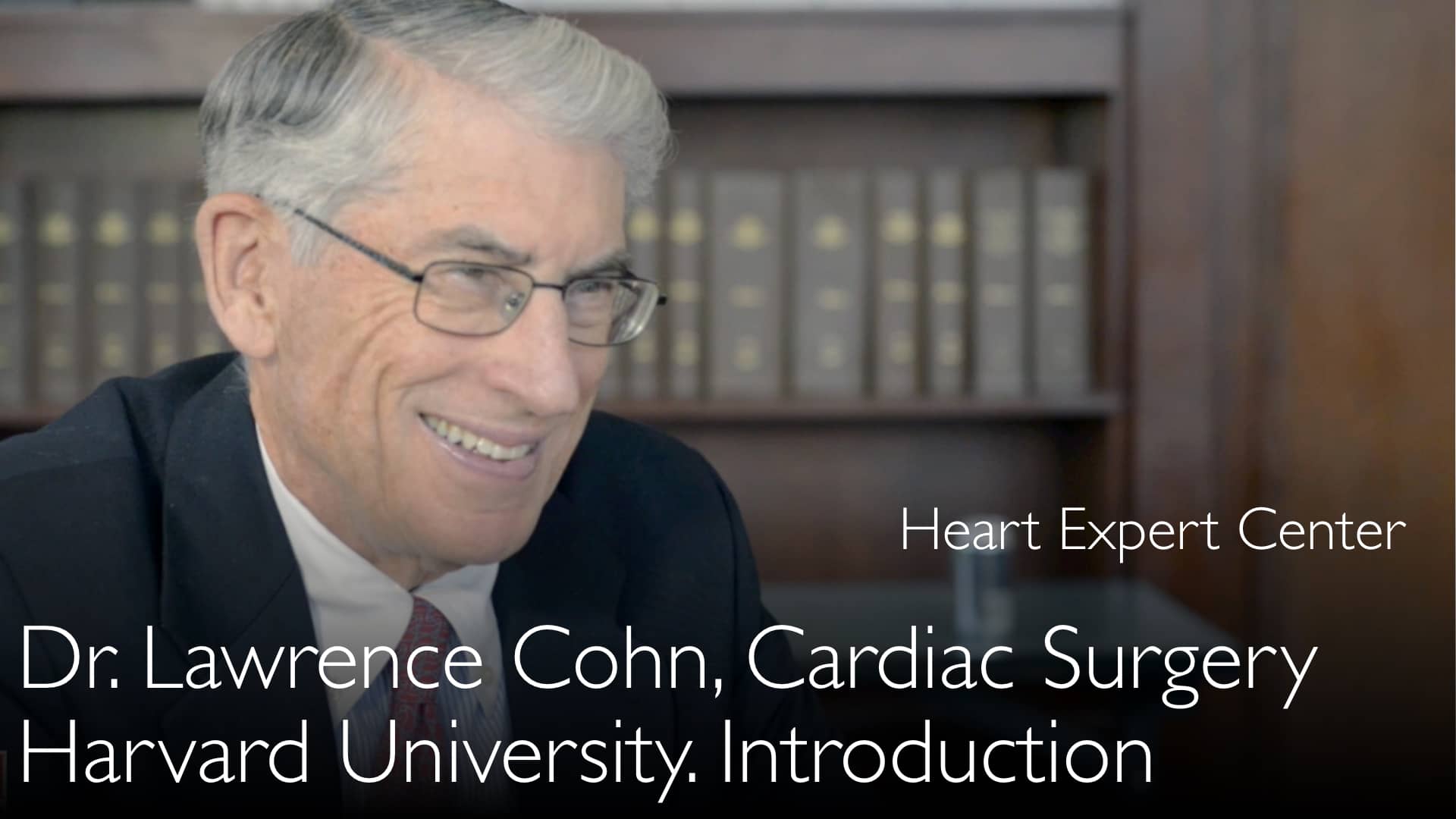מומחה מוביל בכירורגיית לב ובהליכי מסתמי לב פולשניים מינימליים, ד"ר לורנס כהן, MD, מסביר את תהליך קבלת ההחלטות הקריטי בין החלפת מסתם לב ביולוגי למכני, תוך הדגשת האופן שבו גיל המטופל, מטרות אורח החיים, ונכונותו לנהל טיפול נוגד קרישה לכל החיים קובעים את הבחירה האופטימלית לבריאות ואיכות חיים ארוכי טווח.
החלפת מסתם לב ביולוגי לעומת מכני: מדריך למטופל לבחירת המסתם המתאים
קפיצה לפרק
- מסתמים ביולוגיים לעומת מכניים: הבדלים מרכזיים
- המלצות לפי גיל ובחירת המטופל
- השפעת אורח החיים על בחירת המסתם
- סיכוני טיפול בנוגדי קרישה לכל החיים
- הבנת הסיכונים בניתוח חוזר
- קבלת ההחלטה הסופית: תהליך שיתופי
מסתמים ביולוגיים לעומת מכניים: הבדלים מרכזיים
ניתוח להחלפת מסתם לב מציג בפני מטופלים שתי אפשרויות עיקריות. מסתמי לב מכניים עשויים מחומרים מלאכותיים עמידים המיועדים להחזיק מעמד לכל החיים. מסתמי לב ביולוגיים, המכונים גם מסתמים ביופרוסטטיים, עשויים בדרך כלל מרקמת פרה (bovine) או רקמת חזיר (porcine) שעברו עיבוד קפדני. ההתלבטות הבסיסית היא בין עמידות לאורח חיים. כפי שמבהיר ד"ר לורנס כהן, MD, מסתם מכני מחייב נטילת תרופה לדילול דם יומיומית, בעוד שמסתם ביולוגי צפוי לדרוש ניתוח חוזר בעתיד.
המלצות לפי גיל ובחירת המטופל
הנחיות רשמיות מציעות שמטופלים מעל גיל 60 או 65 מתאימים ביותר להחלפת מסתם לב ביולוגי. לעומת זאת, מטופלים צעירים מגיל 60 מומלץ לרוב למסתם מכני. עם זאת, ד"ר לורנס כהן, MD, מציין שבפועל, זו בחירה חופשית של המטופל לאחר הבנת היתרונות והחסרונות. במפתיע, מעל 70% מהמטופלים בארצות הברית בוחרים במסתם מרקמת בעל חיים, ללא קשר לגילם, ומעדיפים חופש מטיפול בנוגדי קרישה על פני עמידות ארוכת טווח.
השפעת אורח החיים על בחירת המסתם
אורח חיים הוא פעמים רבות הגורם המכריע עבור מטופלים רבים השוקלים החלפת מסתם לב. אנשים צעירים ופעילים בוחרים לעתים קרובות במסתם ביולוגי כדי להמשיך ולהשתתף בספורט כמו סקי, הוקי, פוטבול או כדורגל. פעילויות בעלות עוצמת פגיעה גבוהה אלה כרוכות בסיכון משמעותי לפציעה ודימום עבור מטופלים הנוטלים תרופות לדילול דם כמו warfarin. הרצון לחיים פעילים ללא מגבלות וללא הדאגה המתמדת לסיכוני דימום מוביל רבים לקבל את ההסתברות לניתוח שני בעתיד.
סיכוני טיפול בנוגדי קרישה לכל החיים
החיסרון העיקרי של מסתם לב מכני הוא הדרישה המוחלטת לטיפול בנוגדי קרישה לכל החיים. מטופלים חייבים ליטול תרופה יומית, כמו warfarin (Coumadin), ולעבור בדיקות דם תכופות כדי לפקח על רמותיהם. משטר זה מנהל את הסיכון המתמיד להיווצרות קרישי דם על המסתם המכני אך מציג סיכון חדש לסיבוכי דימום חמורים. ד"ר לורנס כהן, MD, מציין גם שלחלק מהמטופלים יש מצבים רפואיים אחרים האוסרים שימוש בטוח בתרופות נוגדות קרישה אלה.
הבנת הסיכונים בניתוח חוזר
החלפת מסתם ביולוגי מחזיקה מעמד typically between 12 to 15 years לפני שהיא מתחילה להתדרדר, להסתייד ולפתח היצרות (stenosis), מה שמחייב ניתוח שני. ד"ר אנטון טיטוב, MD, שאל את ד"ר כהן לגבי הסיכונים הכרוכים בהליך החוזר הזה. בידיים מומחות, הסיכונים של ניתוח החלפת מסתם לב שני יכולים להיות דומים לאלה של הניתוח הראשון. המפתח, לפי ד"ר כהן, הוא שהמטופל לא ימתין זמן רב מדי once the valve begins to fail, כדי להבטיח שהוא במצב הטוב ביותר האפשרי לניתוח החוזר.
קבלת ההחלטה הסופית: תהליך שיתופי
הבחירה בין מסתם לב ביולוגי למכני היא אישית מאוד וחייבת להתקבל בשיתוף פעולה בין המטופל, משפחתו וצוות הקרדיולוגיה שלו. זה involves a careful evaluation of the patient's age, overall health, life goals, and risk tolerance. ד"ר אנטון טיטוב, MD, מדגיש את הערך של חוות דעת שנייה כדי לאשר את האבחנה ולהבטיח שנתיב הטיפול הנבחר הוא הטוב ביותר. החלטה זו מאזנת between the burden of daily medication against the acceptance of future surgery, במטרה ultimate aiming for the best long-term quality of life.
תמליל מלא
ד"ר אנטון טיטוב, MD: האם מטופל should prefer a heart valve replacement with a tissue valve? מסתם לב מכני may be better for some patients. מסתם לב מחזיר is better for elderly patients. Sometimes it is necessary to replace a heart valve.
Tissue or mechanical valve replacement? In elderly patients, porcine aortic valve replacement is preferred. In younger patients, aortic valve replacement with a pig valve is preferred. Younger patients may want to play sports.
How do you compare the choice of a tissue or mechanical valve for a heart valve replacement operation? Today, aortic valve replacement options include animal tissue valves and mechanical valves.
The pig valve vs. mechanical valve decision depends on the willingness and ability of the patient to take oral anticoagulants. The patient needs to take blood-thinning medications for the rest of their life. A repeat surgical operation in 15 years is also required in heart valve replacement with a tissue pig valve.
Lifestyle modification after heart valve replacement requires careful evaluation of life goals and lifestyle requirements.
ד"ר לורנס כהן, MD: Choose a tissue valve to continue active sports. You can do skiing, football, soccer, and traveling with a tissue heart valve.
ד"ר אנטון טיטוב, MD: Sometimes a patient has to have surgery to replace a heart valve. How do you decide between a tissue heart valve and a mechanical heart valve?
How can elderly patients make a decision about replacement of a heart valve?
ד"ר לורנס כהן, MD: There are only two kinds of replacement heart valves. The mechanical heart valve is made of artificial materials. There is also a tissue heart valve, which is made of cow tissue or pig tissue.
The current recommendation is that everyone over 60 or 65 years of age should have a tissue heart valve as a replacement heart valve. Everybody younger than 60 or 65 should have a mechanical valve as a replacement valve.
The problem with a mechanical heart valve is that a patient has to take blood-thinning medication every day for the rest of their life. Patients also have to do blood tests frequently. A lot of patients do not like to do that.
Some patients also have diseases when anti-coagulation with medicines is prohibited. Anticoagulation medications are warfarin or Coumadin.
More than 70% of patients in the United States choose an animal tissue heart valve. This decision is independent of the age of the patient. Then patients do not have to take blood-thinning medication.
Patients also have to understand that they will require a repeat operation in 12 to 15 years' time. Patients will need to replace the animal tissue valve with a new valve.
But elderly patients often receive animal tissue valve replacement because elderly patients do not tolerate anti-coagulation well. Blood-thinning medications, warfarin or Coumadin, can also be contraindicated because of other diseases in elderly patients.
So in the United States, the choice of a mechanical heart valve or an animal tissue heart valve is the free choice of the patient. The patient knows the advantages and disadvantages of both replacement heart valves.
But a lot of younger patients choose an animal tissue replacement heart valve because they want to ski or play hockey. Patients cannot play those sports if they take blood-thinning medications. Coumadin has a high risk of bleeding.
Patients know that they can have an animal tissue valve replacement, but then they will have to have another heart surgery sooner than if they had a mechanical replacement heart valve. A lot of decisions of patients depend on their lifestyle.
This is how patients choose a mechanical heart valve or a pig heart valve for replacement.
ד"ר אנטון טיטוב, MD: What are the risks of repeat heart surgery in 12 to 15 years if a patient has an animal tissue heart valve? Are the risks similar to the risks of the first operation?
ד"ר לורנס כהן, MD: In our hands, the risks of repeat heart valve replacement surgery are similar to the risks of the patient's first valve replacement surgery. In some other hands of surgeons, the risks of a repeat operation could be higher.
But the patient should not wait too long before the second animal tissue valve replacement operation. Sometimes the replaced heart valve of the patients becomes calcified and develops stenosis; then patients should prepare to have repeat surgery to replace the heart valve a second time.
ד"ר אנטון טיטוב, MD: Tissue or mechanical valve replacement? The patient’s age and lifestyle are determining factors. A mechanical valve has anticoagulation necessity. A pig valve has a repeat operation risk.








